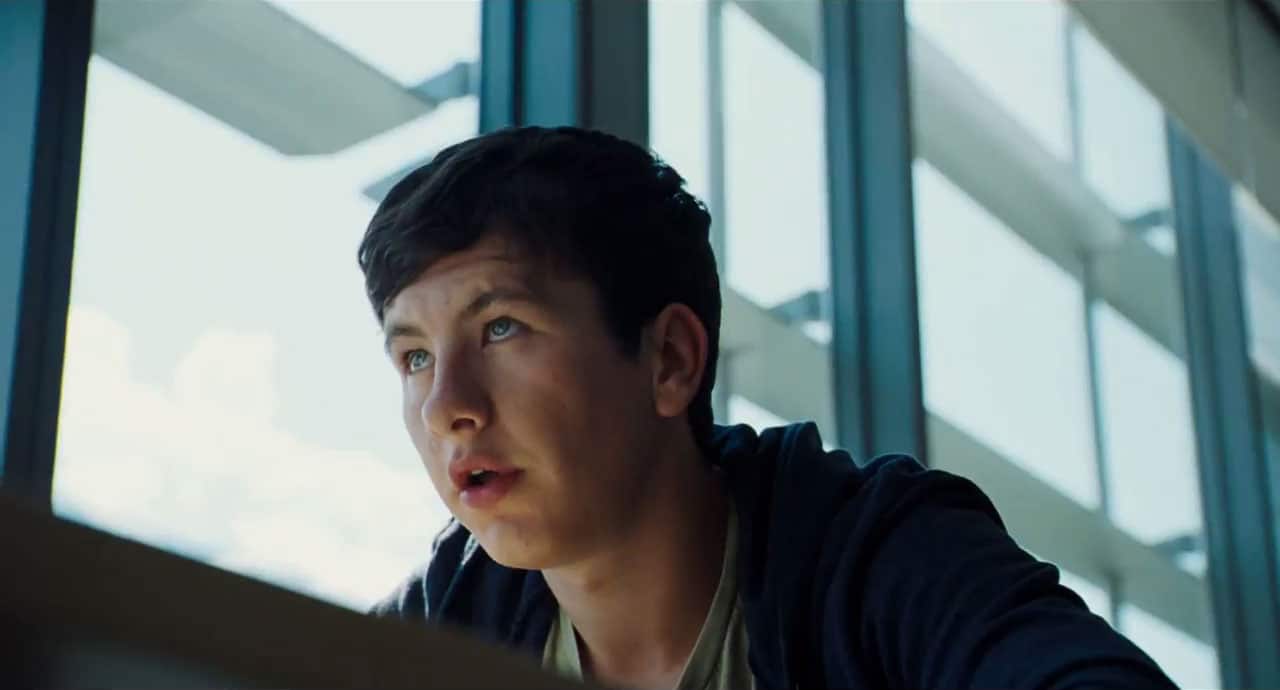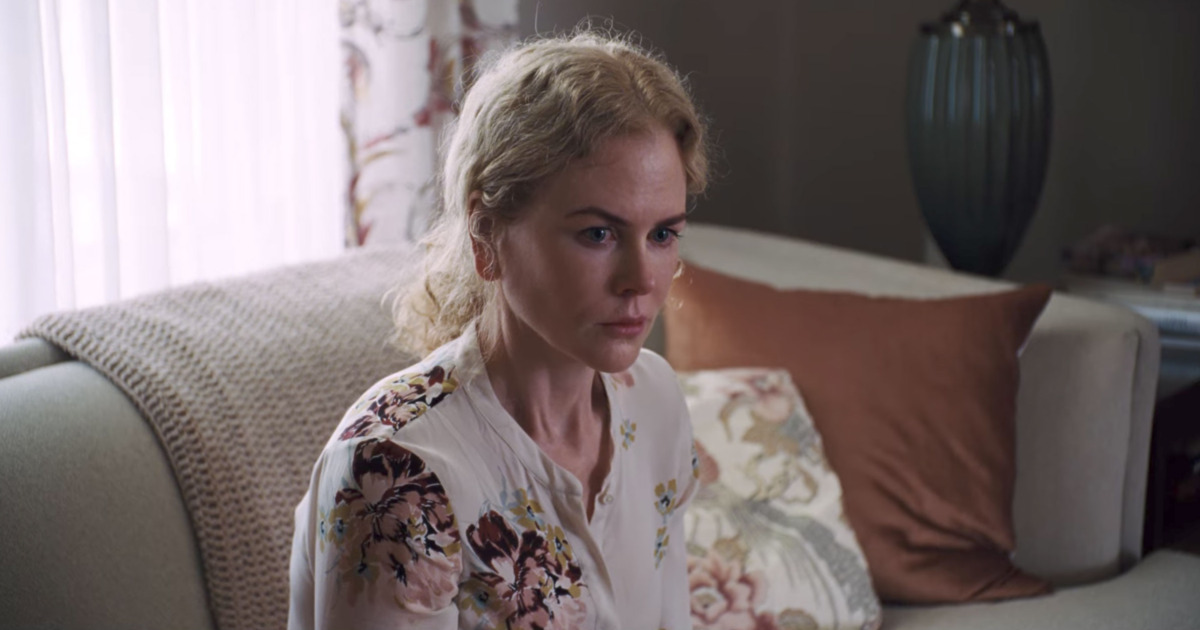4. Barry Keoghan’s Outstanding Performance

The best performance of the film comes from Barry Keoghan, a 25-year-old better known for barely appearing in Christopher Nolan’s “Dunkirk.” This is an outstanding achievement considering the fact that the movie also features Nicole Kidman and Colin Farrell.
His character Martin is the villain of the film: a teenage psychopath who talks in a constant monotone voice, similar to the one of Hal in “2001: Space Odyssey.” He’s a particularly annoying kid that chases Farrell’s character. Martin believes that he was responsible for the death of his father; it’s rumored that he committed malpractice, due to being half-drunk while operating on him.
Martin is surrounded by a mystical aura: he threatens the father of the family, telling him (with a deadly serious tone) that he has to kill either his daughter, son or wife if he wants to save the other two. Until he decides, they’ll first lose the ability to walk, then their appetite, after that they will start bleeding from their eyes and die.
All of that sounds ludicrous at first, until it actually starts to happen. In the exact same way he described.
The movie never states how he does that, so Martin remains a mythical character with powers beyond what should be possible. Keoghan’s coldness as he torments the family is incomparable. Way scarier than the weird giddiness of the “Funny Games” psychopaths.
3. Its Perverse Tone

I believe the tone of “The Killing of a Sacred Deer” was engineered to enrage the audience; this applies the most to moviegoers who think that movies are made to simply be understood, who always expect (or at least in the great majority of cases) that movies have a clear resolution, or at least lend themselves to deep speculation (e.g. most Christopher Nolan movies, “mother!”, “Mr. Nobody,” etc).
One feels impotent because the powers employed by Martin are simply unexplainable. The movie toys with this fact a lot. For example, after the two children become unable to use their legs, the daughter is talking to Martin through her phone. He’s in the parking lot, just outside her hospital room window and tells her to take a peek and say hello. So she suddenly is able to walk again, goes to the window, and Martin is suddenly gone. She goes back to bed and is unable to move her legs again.
A movie that seems realistic enough, on a surface level, is actually based on a Greek tragedy written by Euripides. The goddess Artemis stops the wind to prevent Agamemnon from sailing to Troy because he had (accidentally) murdered a sacred deer. She tells him that the only way for her to bring back the winds is that he kill his eldest daughter.
Meanwhile, the troops are getting restless from the lack of war, so Agamemnon sends a letter to his wife saying his daughter must be sent to him so she can marry the Greek hero Achilles. At the end, he finally decides to kill her after some hesitation.
As in the Greek play, Martin’s (the goddess’s) powers are never in question. And this becomes the main frustration not only for the characters, but for the audience members.
2. Profound Characters

Above any other adjective, “The Killing of a Sacred Deer” is mysterious from start to finish. Since the very introduction of its main characters, the movie is messing with us.
Almost all of them seem to fall into easy stereotypes: the virtuous charismatic doctor; his good behaving daughter who has great grades and is part of the school choir; his seemingly perfect wife, who’s also a doctor and seems to love him very much; and his funny younger child, the only one who remains true to his introduction. Martin also seems harmless at first; a bit weird, sure, but not the evil mastermind that he proves to be later in the film.
Little by little we come to realize that Farrell’s character is actually bad at his job: he gets drunk before surgery, is comfortable with lying to his wife, and has a few disturbing childhood stories. Kidman’s character cheats on her husband regularly; their daughter turns into a crazy freak after spending too much time with Martin, who himself ends up being a total maniac with mysterious magical powers.
The film makes us care about these seemingly perfect characters who are being tormented by this crazy psychopath. Then it organically shows us who they really are while their torture becomes more extreme. And somehow, after all that, we still root for this weird deplorable family.
This is achieved by the portrayal of actual characters. All the performances are great, and accompanied by a 10 out of 10 script, we get a cinematic masterpiece.
1. Anxiety-Inducing Rhythm

As I said in the introduction, the tension in the movie’s showing was palpable. I love being part of an audience that reacts so viscerally to a piece of film. Few movies are capable of forcing moviegoers who paid good money for their seats to leave the theater way before the ending.
The opening shot shows the beating heart of a human being during heart surgery. Along with the classical music that accompanies it, this sequence is a great sneak peek of what will come next.
Martin enters Farrell’s mind like a fast spreading venom. First like a rare oddity, then like an actual mortal threat. The pivotal scene of the film is constituted by said transformation: Martin meets with the father in the hospital’s café. There he explains to him, very calmly and eloquently, the future demise of his entire family, and the appalling thing he has to do to save them. The face of Farrell starts showing a bit of amusement, then confusion, and finally, pure fear. Martin gets escorted out of the building by security; meanwhile, Farrell realizes that what the psychopath said is absolutely true.
In that moment my heart starting beating heavily, and it didn’t return to normal until the final credits stopped climbing up the screen.
The rhythm of “The Killing of a Sacred Deer” is something I had never seen before. The sequence of scenes is meant to make you paranoid, to get you into the father of the family’s head so you can also feel the danger coming, and it does so in a way that doesn’t feel forced at all. The expansion of Martin’s maligned aura is the key to achieving this. Every new beat of the script sticks a small needle of fear into each audience member’s skin. “The Killing of a Sacred Deer” is pure unpredictability.